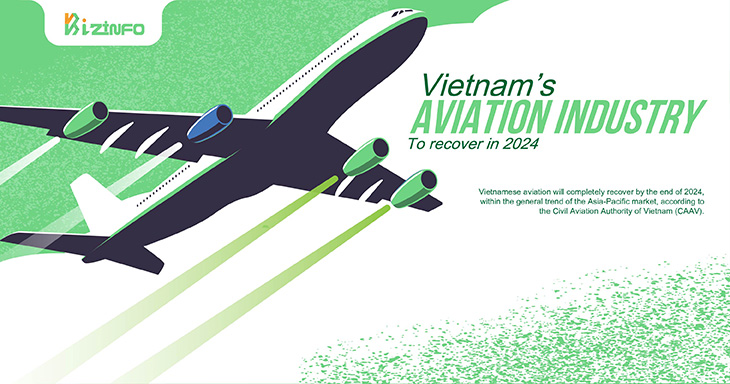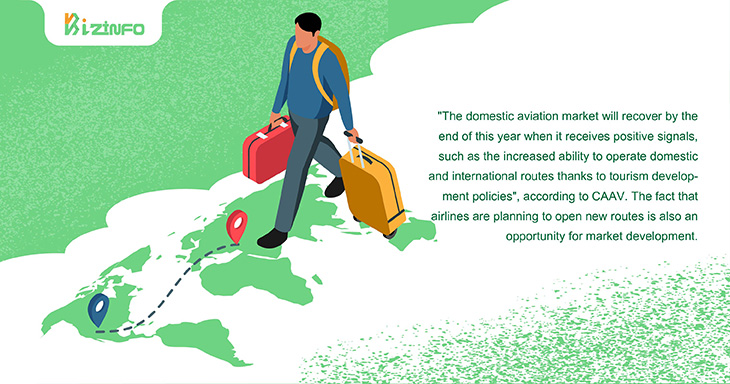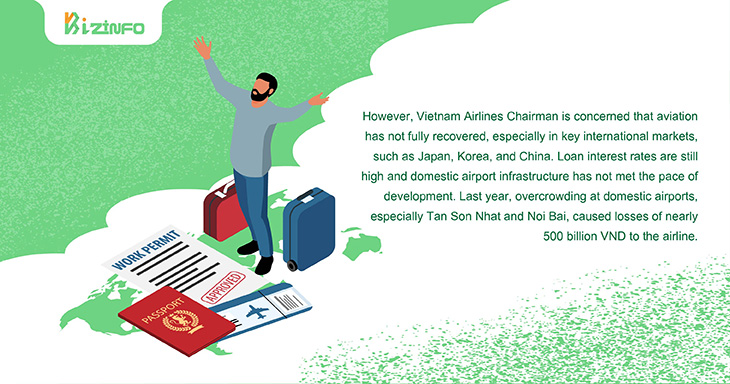Published Jan 2024
Vietnam’s aviation industry to recover in 2024
Vietnamese aviation will completely recover by the end of 2024, within the general trend of the Asia-Pacific market, according to the Civil Aviation Authority of Vietnam (CAAV).

An increase in transportation demand
According to CAAV, demand for passenger transportation this year is expected to be more than 84 million, an increase of 15% compared to 2023 and 6% compared to 2019 - the time before the COVID-19 epidemic. Specifically, domestic visitors are expected to increase by over 3%, reaching about 41.5 million while the figure for international visitors is expected to reach nearly 43 million, up 16% compared to last year.
This year, Vietnamese airlines are expected to transport 61 million passengers, an increase of more than 9% compared to 2023.
"The domestic aviation market will recover by the end of this year when it receives positive signals, such as the increased ability to operate domestic and international routes thanks to tourism development policies", according to CAAV. The fact that airlines are planning to open new routes is also an opportunity for market development.

However, according to this agency, there are still risks affecting the domestic aviation industry in 2024, including inflation and exchange rates. Accordingly, that many countries maintain tight monetary policies, fuel prices may increase due to geopolitical conflicts in the Middle East, or a shortage of high-quality human resources are risk factors for this industry.
The recall of aircraft engines by manufacturer Pratt & Whitney also causes a shortage of aircraft resources, directly affecting the airlines' plans to exploit, restore and expand their flight networks. The infrastructure of some domestic airports also does not meet the development of the aviation industry during the recovery process in 2024.
Supporting recovery
Many plans have been launched by domestic airlines to meet demand when the market recovers. At Vietnam Airlines, Chairman Dang Ngoc Hoa said that this year, the airline will restructure its flight network in accordance with the speed of recovery in each region and market. The airline has also adjusted the flight schedule to increase the efficiency of aircraft use, diversifying ticket sales programs for each type of passenger, in order to maximize the seat utilization ratio.
However, Vietnam Airlines Chairman is concerned that aviation has not fully recovered, especially in key international markets, such as Japan, Korea, and China. Loan interest rates are still high and domestic airport infrastructure has not met the pace of development. Last year, overcrowding at domestic airports, especially Tan Son Nhat and Noi Bai, caused losses of nearly 500 billion VND to the airline.

From a management perspective, the Civil Aviation Authority of Vietnam said it will provide priority development policies such as forecasting market demand, working with airlines to have practical solutions according to the operating conditions of the infrastructure and providing additional supply on routes with high demand.
"Some airports will be required to increase operating capacity and flight operations management to best meet the operating needs of airlines and the increasing travel needs of people," said the CAAV.
This agency also proposed that the Government reduce some taxes and fees until the end of 2024, support interest rates for businesses and work with national aviation authorities to increase supply capacity and support operations at international airports.
According to forecasts of the International Air Transport Association (IATA), the Asia-Pacific market, the region with the slowest recovery, could cut losses and achieve a profit of about 1.1 billion USD in 2024. IATA estimates that this year global airlines will achieve record revenue of 964 billion USD, of which revenue from passenger transportation is about 717 billion USD, an increase of 12% compared to 2023.
Source: vietnambiz
Compiled by VBI


